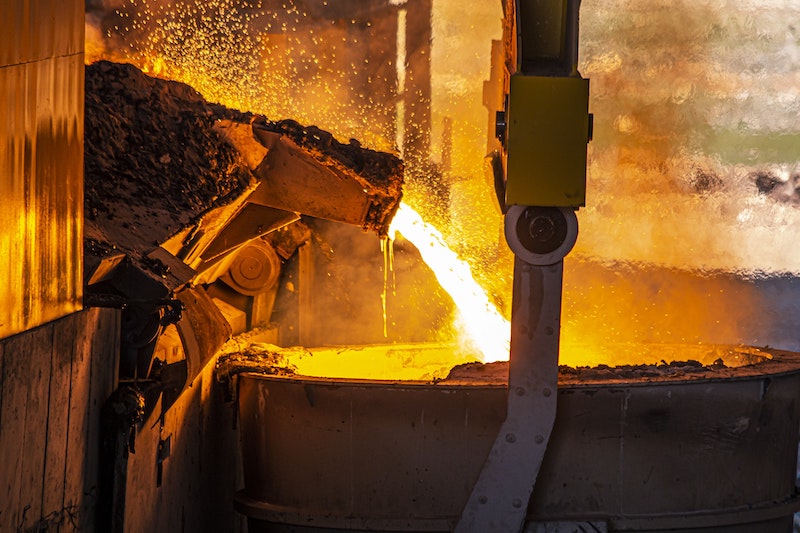The Federal government is being lobbied to put the coal used in steelmaking on the critical minerals list. But, as Simon Nicholas writes, its days are numbered and carbon capture and storage won’t save it from the slag heap of history.
The fossil fuel industry’s attempts to turn back time – and jump on the latest bandwagon – have reached new heights in the wake of the Federal government’s release of its new critical mineral strategy, the precursor to an update of the critical minerals list.
Critical minerals are ‘hot’ properties these days because a) Australia has lots of them and b) they are vital in renewable technologies.
The current list contains obscure minerals such as beryllium, tantalum and niobium (as well as lithium, silicon and titanium) but, according to fossil fuel heavyweights, it is missing one key ingredient – metallurgical coal.
Miners makes a case for coal
Coronado Global Resources chief Douglas Thompson has set himself the goal of educating people about the critical nature of metallurgical or coking coal or ‘met coal’.
Coronado, which owns coal mines in Australia and North America, reported a $US772m ($A1.15bn) full-year profit in February. It has plenty riding on coking coal being used in steelmaking for decades to come.
“With the world dreaming and aspiring for a new future, steel is involved in everything we do … met coal is a critical material,” Thompson recently told the AFR.
“We are going to see the supply/demand imbalance become even bigger because of the acceleration in change that we as a society are seeking. My task is to educate people about how critical met coal is to support the future.”
Out of step, out of time
The trouble with such arguments is the future for steelmaking is much greener — and the coal industry’s main ‘green’ technology, carbon capture, usage and storage (CCUS), is being pushed out by alternative and more successful technologies. Metallurgical coal is not ‘critical’.
Carbon capture will not play a big role in steel decarbonisation
A key new report from Agora Industry finds that carbon capture, usage and storage (CCUS) for coal-consuming blast furnaces will not play a major role in global steel decarbonisation, and that a phase-out of coal in the steel sector is technically feasible by the early 2040s.
This should not be much of a surprise.
Nordic Nah: independent report opens new fault lines in carbon capture and storage’s star projects
IEEFA research has highlighted that CCUS has a long history of significant under-performance and failure in other sectors, and even projects that the fossil fuel industry likes to cite as successes raise major questions about project risk and the feasibility of rolling out such projects globally.
If anything, successful CCUS implementation in the steel sector seems even less likely than in other sectors. An integrated, blast furnace-based steel plant emits carbon dioxide (CO2) at multiple stages of the steelmaking process and at differing concentrations, making the retro-fitting of CCUS to such plants complicated and expensive.
Another key question is where the captured carbon would be stored in the event of a major roll-out of CCUS across the global steel industry. Blast furnaces tend to be located close to centres of steel demand rather than near suitable underground storage sites. This suggests carbon would often need to be transported long distances to storage sites, an additional expense that further erodes the viability of CCUS for steel.
the €200m project will capture just 125,000 tonnes of carbon per year, equivalent to around 2%-3% of the total emissions from the plant if running at full capacity.
JFE Steel has just joined a study with other Japanese companies and Malaysia’s Petronas to evaluate the potential to capture CO2 at JFE’s steelworks and transport it by ship in liquid form to a potential storage location in Malaysia. Australia is also eyeing the import and storage of carbon from places like Japan and South Korea.
The shipping of carbon will clearly add significant costs to CCUS for steel, while the cost of green hydrogen – the leading alternative to coal for steelmaking – is set to drop significantly.
Plans need to be questioned
Despite a clear viability issue facing CCUS, steelmakers and iron ore producers are still attempting to convince stakeholders that it will play a key role in the sector’s decarbonisation.
BHP – one of Australia’s ‘big three’ iron ore producers and the world’s largest shipper of metallurgical coal – is tinkering with carbon capture technology at pilot scale and signed an agreement with Chinese steel major HBIS earlier this year. This followed BHP’s agreement last year to collaborate on the technology with Mitsubishi Heavy Industries and ArcelorMittal, including at the latter’s Ghent steelmaking plant in Belgium.
ArcelorMittal has already inaugurated its “flagship” carbon capture and utilisation (CCU) demonstration plant at the Ghent plant. However, the €200m project will capture just 125,000 tonnes of carbon per year, equivalent to around 2%-3% of the total emissions from the plant if running at full capacity.
Despite this, carbon capture remains a key pillar of ArcelorMittal’s long-term decarbonisation plan via its so-called ‘Smart Carbon’ pathway.
Alternative steel technology leaving carbon capture behind… again
According to Agora Industry’s new report, the 2030 project pipeline of direct reduced iron (DRI) plants – which do not use coal – has reached 84 million tonnes (Mt) of capacity globally while commercial-scale CCUS stands at only 1Mt.
Many of these industrial-scale DRI projects will use gas initially but will be built hydrogen-ready so they can switch to green hydrogen as it becomes available. Although 84Mt is only around 5% of global steelmaking capacity, more than 70% of global capacity will reach a reinvestment decision prior to 2030.
As such, it can be expected that the pipeline of non-coal-based DRI steelmaking projects will increase much further while CCUS is left behind again, just as it was in the power sector by wind and solar.
A familiar story
Fatih Birol, Executive Director of the IEA, stated in an April 2023 column for the Financial Times that “The project pipeline for producing steel with hydrogen rather than coal is expanding rapidly.”
In June 2023, the two other Australian iron ore majors signed agreements with the world’s largest steelmaker to work on steel decarbonisation. Rio Tinto and Fortescue will both work with China Baowu to investigate DRI- and hydrogen-based steelmaking.
The story of carbon capture technology being left standing at the start line by alternative, non-fossil fuel-based technologies is a familiar one. Any steelmaker or iron ore producer relying on CCUS in long-term decarbonisation pathways needs to have their plans questioned.
An increasingly unlikely role for CCUS will also see coal’s role in steelmaking progressively supplanted by non-fossil alternatives, with green hydrogen leading the race. It won’t happen overnight, but the clock is already ticking for metallurgical coal.
WA Carbon Fiasco: Pilbara plant to blow more CO2 than Safeguard Mechanism will save
Simon Nicholas is an Energy Finance Analyst at the Institute for Energy Economics and Financial Analysis (IEEFA) and a fellow of the Institute of Chartered Accountants of England and Wales. Nicholas joined the IEEFA team in July 2016, after 16 years’ experience within the finance industry at ABN Amro, Macquarie Group and Commonwealth Bank of Australia in both Sydney and London.

